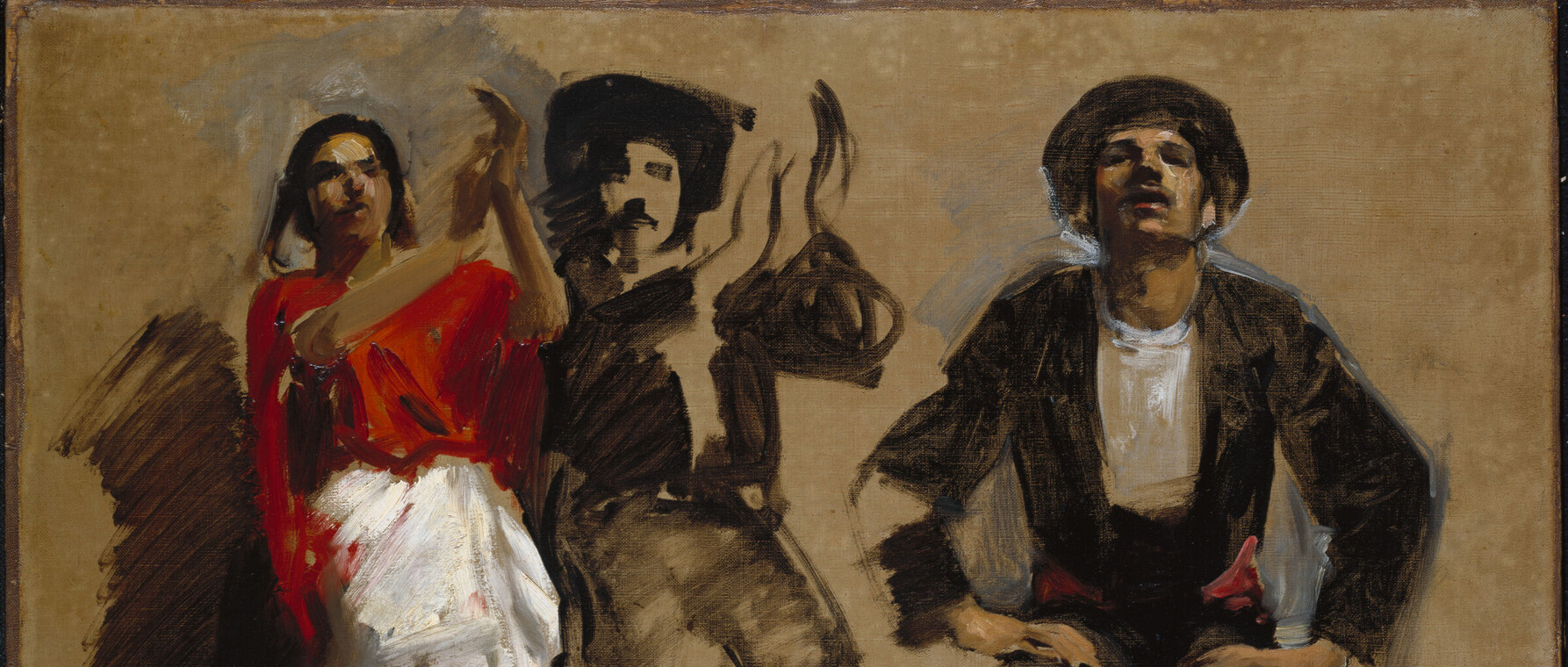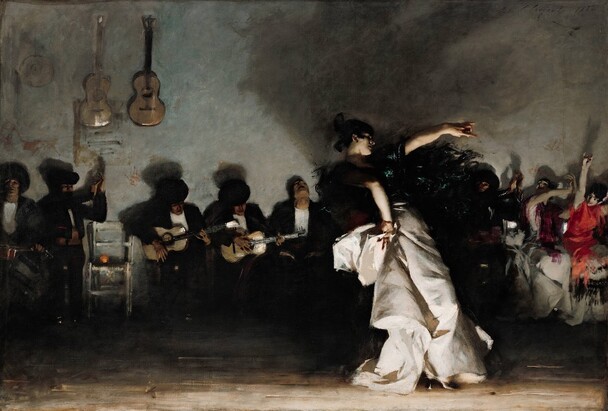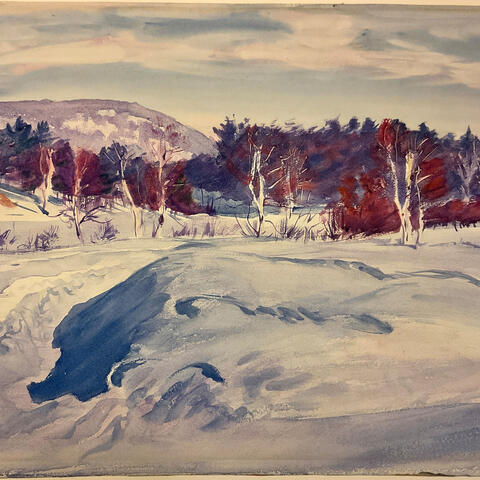What is “Done”?
Notes From a Writer's Desk

A cake is done when you take it out of the oven. A shirt is done when the last seam is sewn and pressed. A house is done when the roof is tiled, and all cracks have been sealed. A test is done when you answer the last question, or your time is up. But when is a painting done? When is an essay done? When it comes to creative work, the boundaries of “done” are harder to discern.
When visiting the Harvard Art Museum recently, I saw numerous “studies” on display, practice sketches or drafts like John Singer Sargent’s Study for Seated Figures for “El Jaleo” which would later be incorporated into the finished painting. These studies and our treatment of them raise the question of what constitutes a finished object. Is the study just a draft and the painting the true product? But what if the images in the study never make it into the painting, or what if they appear but in an altered form? And if the study is incomplete, why do we hang it in our museums, just like the completed painting?
As with writing, painters paint for different reasons—sometimes for practice, sometimes to test out ideas, sometimes for a commission, and sometimes to express something vital through their art. In many cases, the reason for beginning a painting or piece of writing defines when it is done. But at the same time, when I imagine Sargent painting El Jaleo, I imagine all the choices that he had to make, all leading up to the final brushstroke. Had he captured the right contrast between light and dark? What about the shadows, the subtle markings on the tavern wall, and the angle of the dancer’s arm? In the end, Sargent had to make a choice that the painting was “done” even though more could always be added, altered, adjusted. It was close enough to his vision. It was ready to go out into the world.

When writing, we also contend with all these choices, all these questions about when our writing is done. The answer to that question is subjective, and depends largely on the circumstances of your writing, so here are a few different ways to know you are “done” with a piece of writing:
You reached your deadline. The final paper for your seminar is due at 11:59 p.m. on December 18, so at 11:57 p.m., as you are frantically saving your doc as a pdf and uploading to the canvas site, you are done. You may have some regrets; there may have been more things you wanted to do if you just had the time, but the fact of the matter is that you are done. You completed the task in front of you and that submitted essay is finished. Of course, you might pick it up again in the future when it might become a dissertation chapter or an article or the basis for a new book project. Like Sargent’s Study for Seated Figures, your essay might be incorporated into other work in the future, but that does not mean that the essay at the time of submission was not done. This is more difficult to accept when the deadline is self-imposed, but try to keep in mind why you set that deadline in the first place. Your time is limited, and mapping out the other projects or responsibilities that require your attention can be a great way to add some urgency and finality to your personal deadlines.
Your advisors or publisher approved the draft. Especially when writing your dissertation, for which there are few hard deadlines, it is important to trust your advisors and listen to them when they say you are done. This might mean you send your advisors what you think is an early draft and they tell you to move on to the next chapter, even though there are a few things you would still like to fix in this draft or sections you would like to add. Remember that a dissertation is a finished product that allows you to graduate, but that most advisors still see it as preparation for future work. Similarly, an article for a journal is done when the journal agrees to publish it, whether that is when you first submit it or after responding to advice in the revise and resubmit letter.
You achieved your goal. All of these ways of knowing that you are done with a piece of writing come back to setting realistic goals and recognizing when you have achieved them. For a term paper, the most basic goal is to pass the class. While a larger goal of your dissertation may be to eventually intervene in the scholarly conversation in your field, the most basic goal is to have the dissertation accepted by your department and to receive your degree. Like Sargent painting his study, your goal for some writing may be to help you better understand an idea or articulate a claim that has been escaping you. This writing may not be a finished product you want to share with others, but by knowing your goal you can still recognize when it is done. If you always focus on the largest, most all-encompassing goal of your scholarship, you will probably never feel like your writing is done. This can rob you of the satisfaction of reaching a goal or completing something. Instead, it can be helpful to recognize that there are some goals for your scholarship that you might pursue across your entire career and to try to identify the smaller goals within that pursuit.
Rather than thinking about whether your essay, chapter, or article is done, you might also find it useful to reframe the question and ask yourself, “Am I ready to let this writing go for now?” Letting go is a powerful idea as it can signify multiple things: letting your writing go into the world to be read and interpreted by your advisors, peers, or other scholars; letting go of your fear and anxiety about the quality of your writing; letting go of the need to continue editing and perfecting; knowing that being done is always, eventually, the decision to put down the pen or close the file on your computer.
Banner photo: Sargent, John Singer. Study for Seated Figures for “El Jaleo,” Oil on canvas, 1882, (Harvard Art Museums collections online). / Harvard Art Museums/Fogg Museum, Bequest of Grenville L. Winthrop
Ready to book an appointment with FWC staff? Access the FWC intake form.
Get the Latest Updates
Join Our Newsletter
Subscribe to Colloquy Podcast
Simplecast





